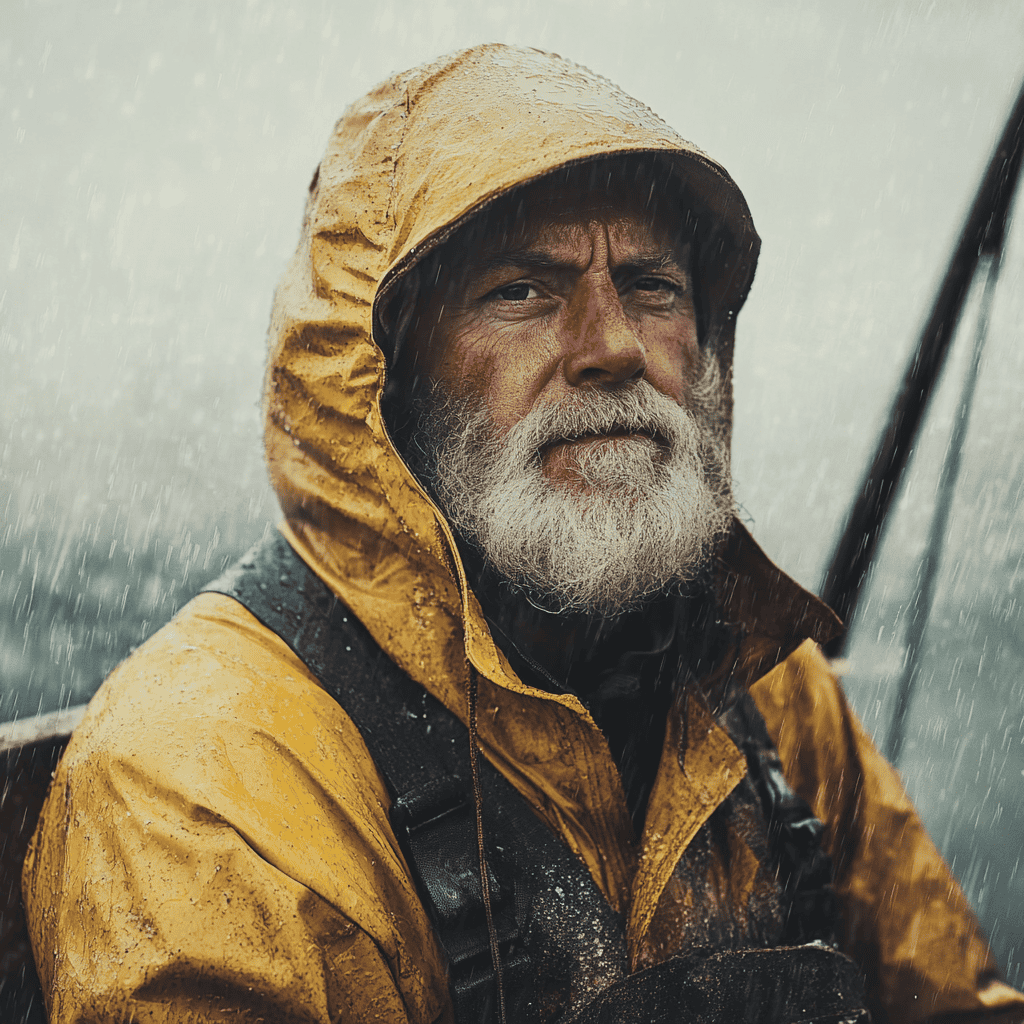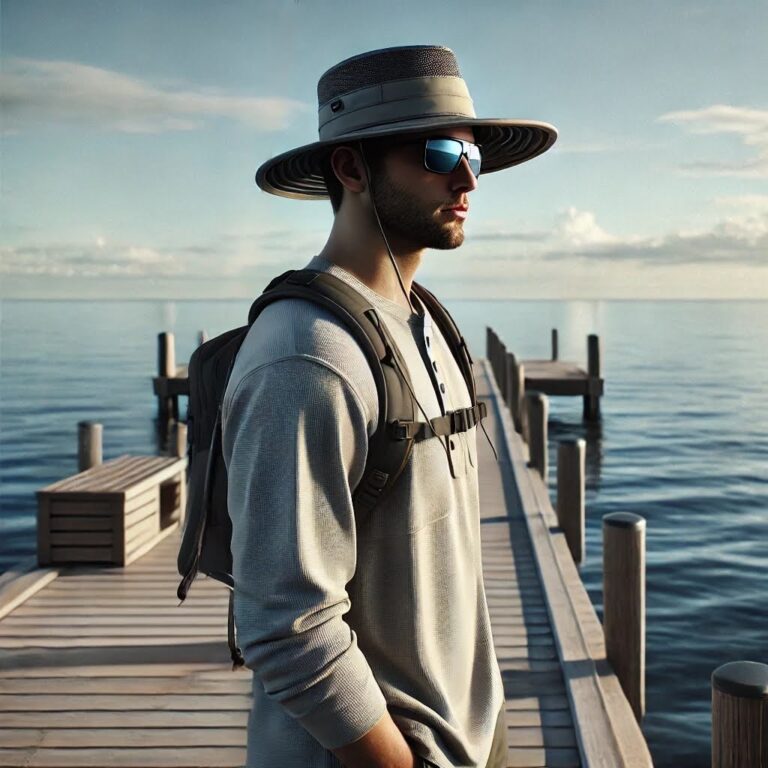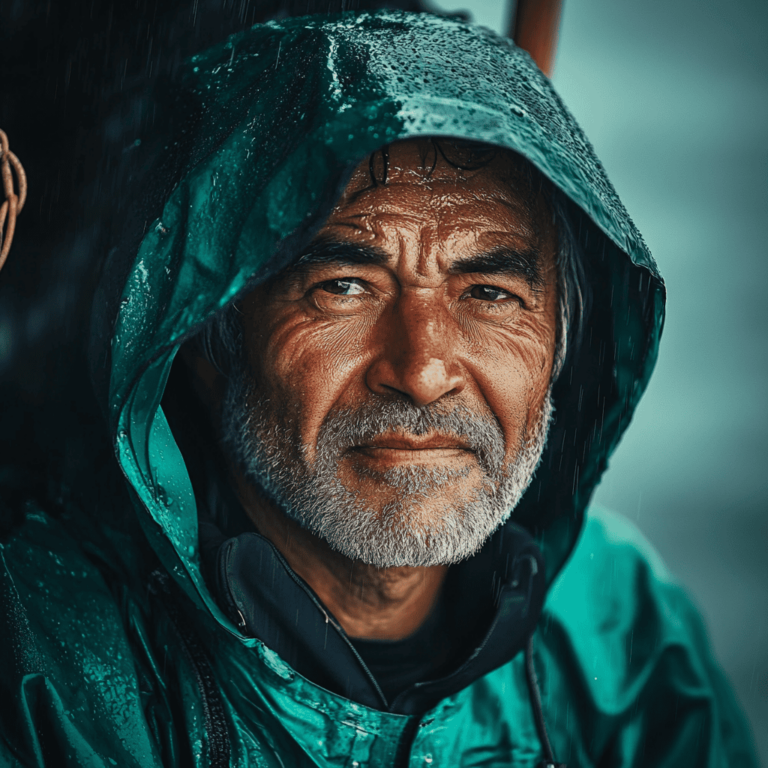Fishing Rain Gear: Stay Dry and Comfortable on the Water
Fishing is a passion that cares not about the whims of weather.
Being well-prepared with the best fishing rain gear can make all the difference between a memorable fishing adventure and a soggy disaster.
This comprehensive guide will explore the different types of fishing rain gear, the materials used, the pros and cons of each, and essential considerations for making the best choice for your needs.
The Importance of Fishing Rain Gear
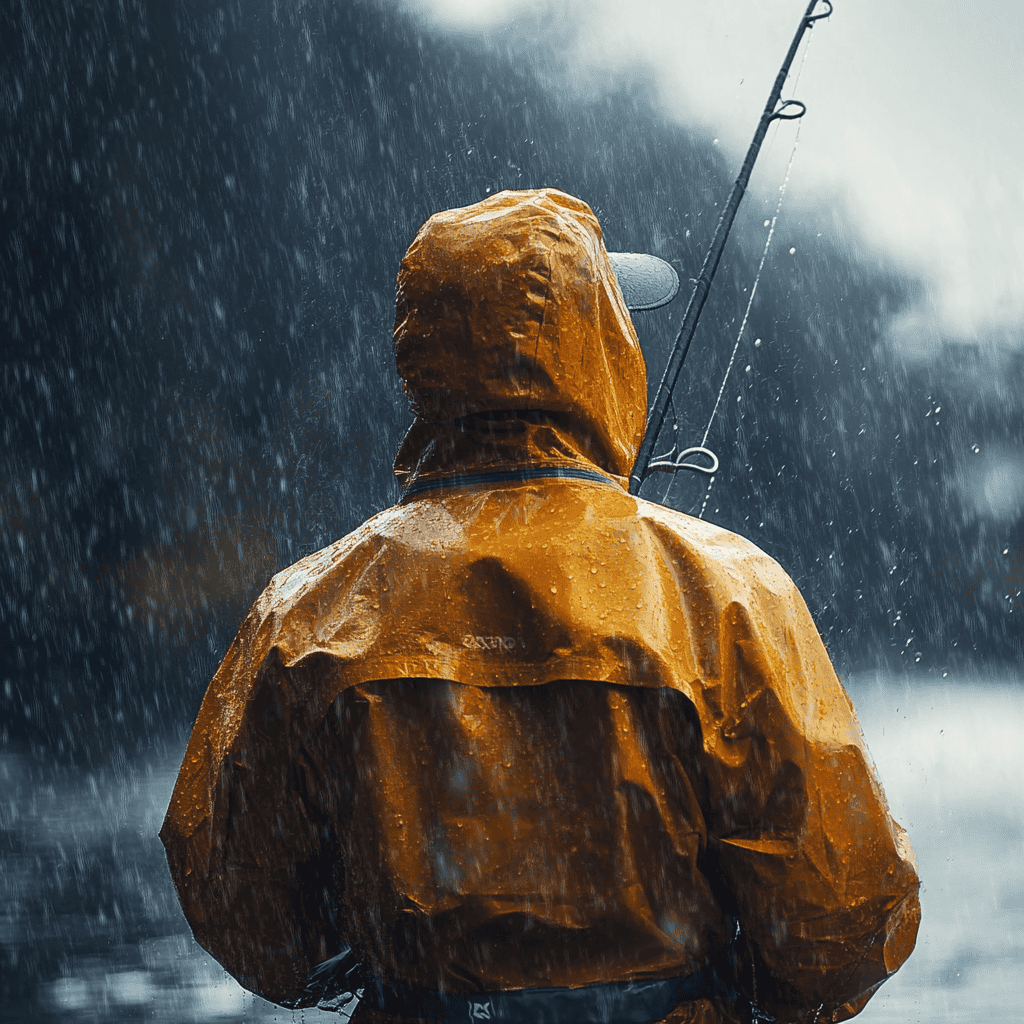
Fishing in the rain can be an exhilarating experience, often bringing out some of the best catches.
However, it also poses challenges, such as staying dry and maintaining comfort.
Proper rain gear not only protects you from the elements but also ensures safety by keeping your body temperature regulated.
Hypothermia can be a risk even in relatively mild conditions if you’re wet and exposed to wind.
Therefore, investing in quality rain gear is crucial for any serious angler.
Types of Fishing Rain Gear
Each of these categories offers different levels of protection, flexibility, and comfort.
Let’s dive into each type and discuss their materials, advantages, and disadvantages.
1. Rain Jackets
Material: Rain jackets are commonly made from materials such as Gore-Tex, PVC, rubber, and nylon.
Gore-Tex is a popular choice because it is waterproof and breathable, making it ideal for active anglers.
PVC and rubber provide excellent waterproofing but lack breathability, which can lead to discomfort over extended periods.
Nylon, often treated with a waterproof coating, offers a good balance of water resistance and breathability.
Pros:
- Versatile and can be worn on and off the water.
- Various designs and styles, including lightweight and heavy-duty options.
- Some models come with adjustable hoods, cuffs, and waistbands for a customizable fit.
Cons:
- High-end options like Gore-Tex can be expensive.
- Non-breathable materials can cause sweating and discomfort.
- Limited lower body protection.
2. Rain Pants/Bibs
Material: Similar to rain jackets, rain pants and bibs are made from Gore-Tex, PVC, rubber, and nylon.
Bibs provide more coverage by extending up the torso, offering better protection against water entry.
Pros:
- Complete lower body protection.
- Bibs prevent water from entering through the waistband.
- Available in various thicknesses for different weather conditions.
Cons:
- Can be cumbersome and restrictive, especially for active fishing.
- Non-breathable options can become uncomfortable in warmer weather.
- May require frequent adjustments to maintain comfort and fit.
3. Rain Suits
Material: Rain suits combine a rain jacket and pants into a single package.
They are typically made from the same materials as individual jackets and pants, including Gore-Tex, PVC, rubber, and nylon.
Pros:
- Full-body protection in one convenient package.
- Coordinated designs ensure matching performance between jacket and pants.
- Often more cost-effective than buying separate pieces.
Cons:
- May lack the flexibility and customization of separate pieces.
- Can be challenging to find a perfect fit for both the upper and lower body.
- Non-breathable suits can lead to overheating.

4. Waders
Material: Waders are primarily made from materials like neoprene, Gore-Tex, and rubber.
Neoprene offers excellent insulation, making it ideal for cold weather.
Gore-Tex waders are popular for their breathability and lightweight nature.
Rubber waders are durable and fully waterproof but can be heavy and restrictive.
Pros:
- Full lower body immersion protection, ideal for wading in streams, rivers, and marshes.
- Available in chest, waist, and hip heights to suit different water depths.
- Neoprene options provide excellent insulation for cold-water fishing.
Cons:
- Can be bulky and difficult to move in.
- Non-breathable materials can cause overheating and sweating.
- Can be expensive, especially high-quality Gore-Tex waders.
5. Ponchos
Material: Ponchos are usually made from lightweight materials like PVC, polyester, or coated nylon.
They offer basic rain protection and are easy to pack and carry.
Pros:
- Lightweight and compact, making them easy to carry and store.
- Quick to put on and take off.
- Provides basic protection from rain and wind.
Cons:
- Limited coverage and can leave arms and legs exposed.
- Not ideal for windy conditions as they can easily flap around.
- Less durable and not suitable for heavy rain or extended use.
Choosing the Right Material
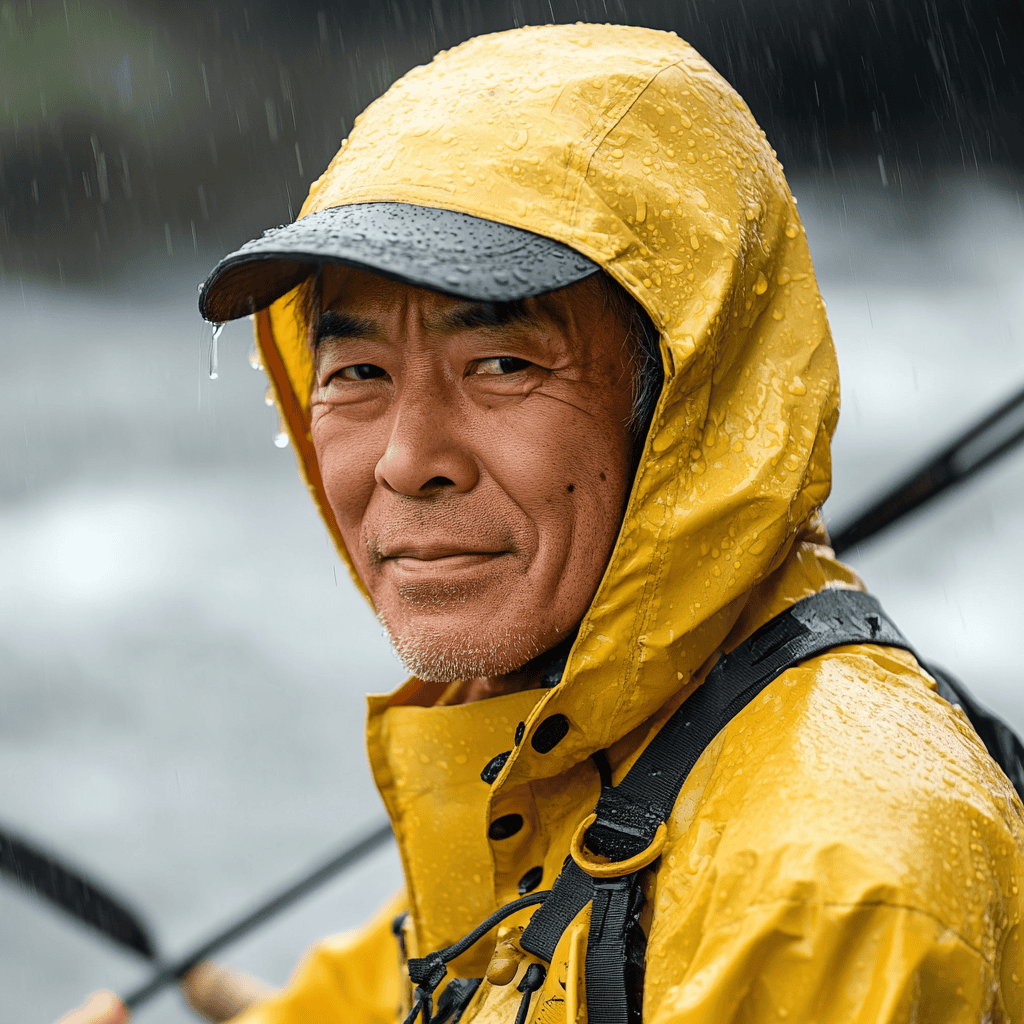
The material of your rain gear is a critical factor in determining its effectiveness and comfort.
Here’s a closer look at the materials commonly used:
- Gore-Tex: Known for its breathability and waterproofness, Gore-Tex is a high-end material that provides excellent protection while allowing moisture from sweat to escape. It’s ideal for long fishing trips and active anglers.
- PVC: PVC is a highly waterproof material often used in budget-friendly rain gear. While it keeps water out, it doesn’t breathe, which can lead to discomfort if you’re active or if the weather is warm.
- Neoprene: This material offers excellent insulation and is often used in waders. It’s not breathable but provides good warmth, making it suitable for cold weather fishing.
- Rubber: Rubber provides complete waterproofing and durability. However, it’s heavy and lacks breathability, making it uncomfortable for extended wear.
- Nylon: Treated with waterproof coatings, nylon offers a good balance of water resistance and breathability. It’s lightweight and versatile but may not be as durable as other materials.
Key Features to Consider
When selecting fishing rain gear, consider the following features to ensure you get the best protection and comfort:
- Waterproof vs. Water-Resistant: Waterproof gear is fully sealed against water, while water-resistant gear offers basic protection against light rain. Choose waterproof options for full protection, especially in heavy rain.
- Breathability: Breathable materials like Gore-Tex prevent moisture buildup inside the gear, keeping you dry and comfortable.
- Durability: Look for reinforced seams, sturdy zippers, and high-quality materials that can withstand the wear and tear of fishing activities.
- Fit and Mobility: Ensure your rain gear allows for a full range of motion, especially if you’re casting or moving around a lot. Adjustable cuffs, waistbands, and hoods can help achieve a better fit.
- Pockets and Storage: Consider gear with ample pockets for storing tools, lures, and other essentials. Waterproof zippers or flaps can keep your belongings dry.
- Weight and Packability: Lightweight and packable rain gear is ideal for easy transport and storage. Look for compact options if you need to carry your gear on long treks or pack it away when not in use.
Care and Maintenance
Proper care and maintenance of your rain gear will extend its lifespan and maintain its effectiveness.
Here are some tips:
- Cleaning: Follow the manufacturer’s instructions for cleaning your gear. Typically, hand washing with mild soap and water is recommended. Avoid using harsh detergents or bleach, as they can damage the waterproof coatings.
- Drying: Air dry your gear thoroughly after use. Avoid direct sunlight or high heat, as these can degrade the materials. Ensure your gear is completely dry before storing it to prevent mold and mildew.
- Storage: Store your rain gear in a cool, dry place. Avoid folding or compressing it for long periods, as this can damage the fabric and waterproof coatings.
- Repairs: Inspect your gear regularly for any signs of wear or damage. Small tears or holes can often be repaired with patches or waterproof adhesive. For larger repairs, consider professional services.
Conclusion
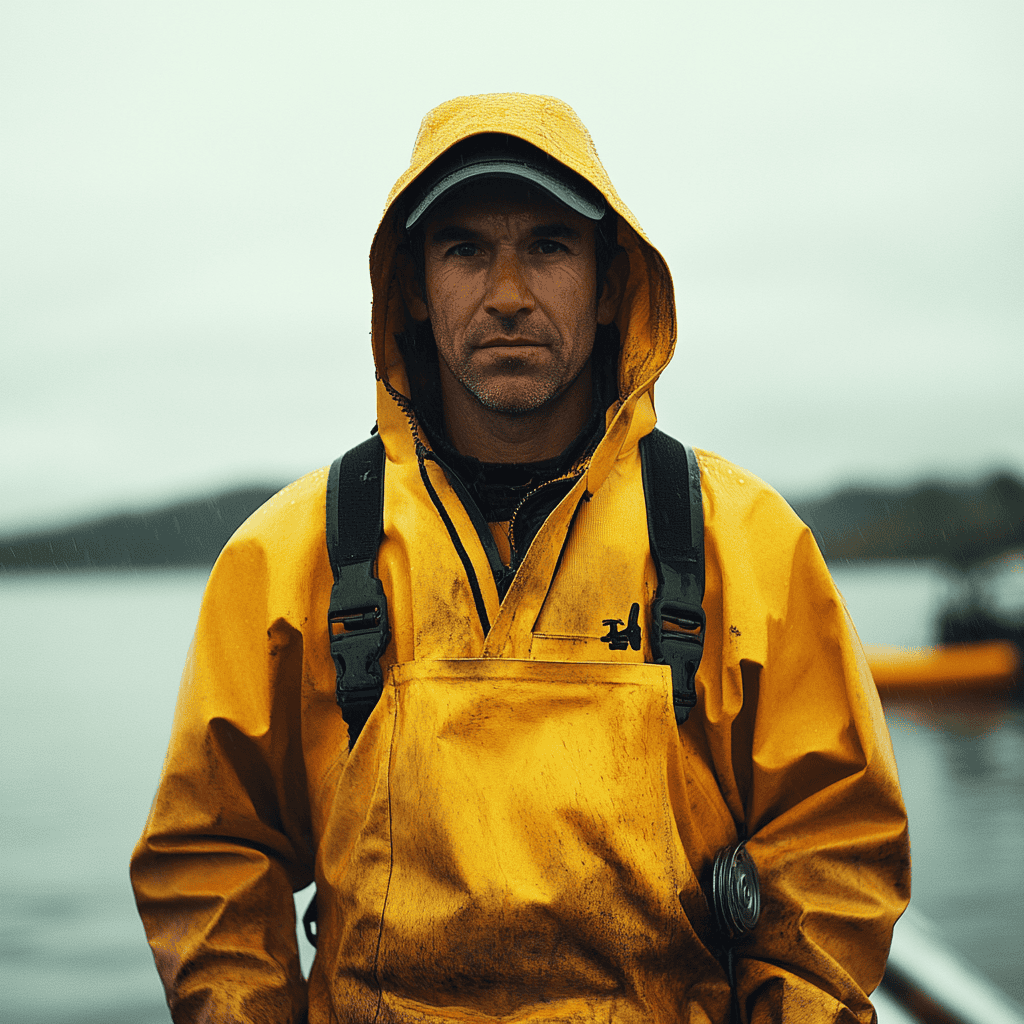
Investing in the right fishing rain gear is essential for staying dry, comfortable, and safe on the water.
Whether you choose a rain jacket, pants, suit, waders, or poncho, consider the materials, features, and your specific needs.
With the right gear, you can enjoy your fishing adventures regardless of the weather conditions.
Remember, quality fishing rain gear is an investment in your comfort and safety.
Don’t compromise on quality, and take the time to find gear that fits well and meets your needs.
Happy fishing, and may your lines always be tight, even in the rain!

